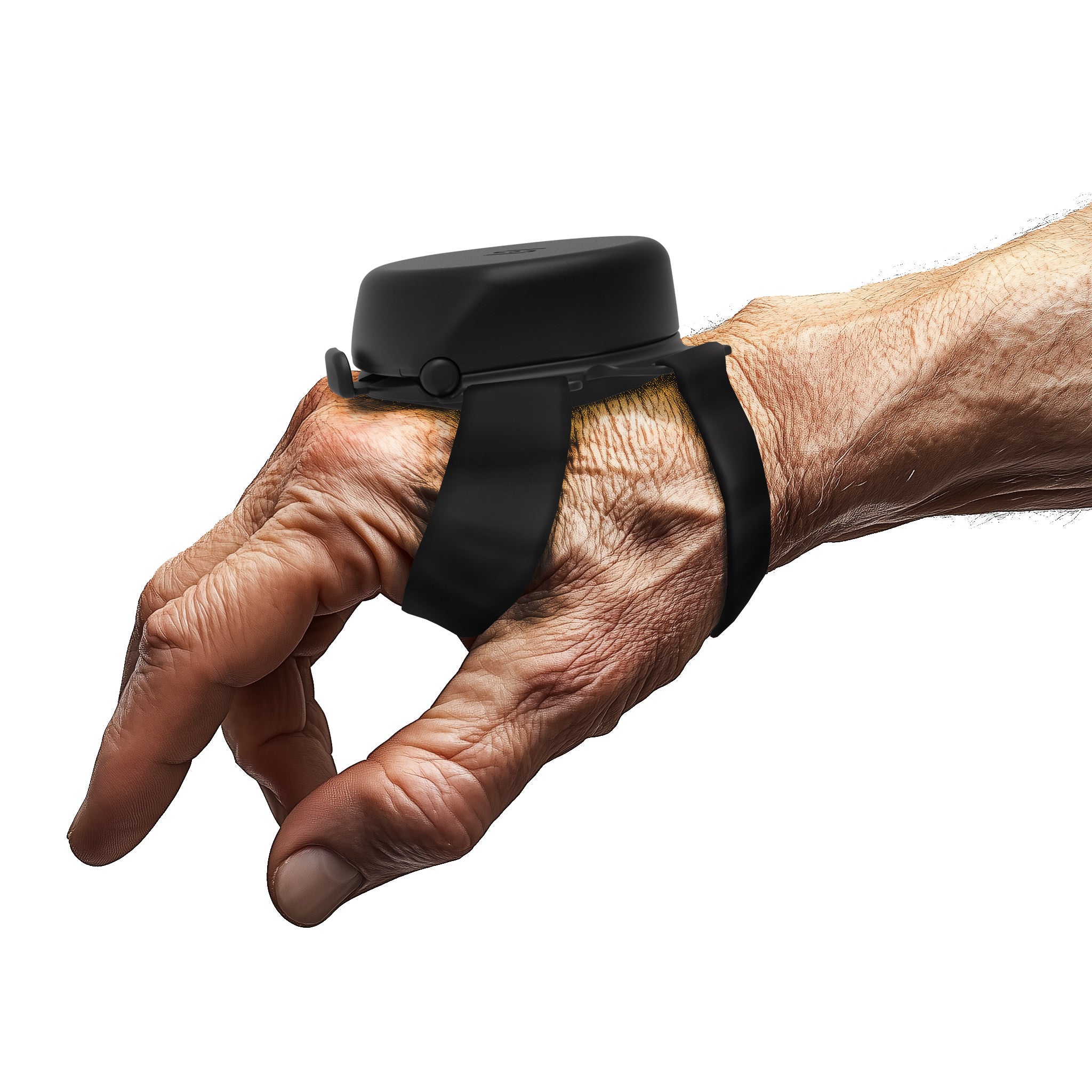Introduction:
Parkinson’s disease is a progressive neurodegenerative disorder that has been widely recognized for its motor symptoms such as tremors, stiffness, and bradykinesia. Recent studies have indicated an unexpected and possibly transformative result that Parkinson's disease and musky smell could be connected. This finding opens doors toward novel avenues of research and has the power to redefine the diagnosis and treatment of the condition.
In particular, this odor linked with Parkinson’s may serve as a way to detect it at an early stage without using invasive methods, making early detection important for effectively managing this disorder.
We will examine the circumstances behind this occurrence, look into possible reasons for smelling it, and discuss how it might pave the way for new diagnostic tools or therapeutic strategies for Parkinson's disease.
The Pathophysiology of Parkinson’s Disease: How It Might Lead to a Smell
Parkinson’s disease primarily stems from the loss of dopamine-producing neurons in the substantia nigra, a part of the brain responsible for coordinating movement. While the disease is best known for its motor symptoms, it also affects other areas of the body, including the brain, leading to non-motor symptoms, such as a distinct odor associated with the condition. So, what causes old people to smell seen in elderly people suffering from Parkinson’s disease?
One possibility is that when dopamine is lost there are changes in brain biochemistry and metabolic rates which lead to the formation of volatile organic compounds (VOCs). Skin or breath could also contain these substances leading to a characteristic musky smell.
Dopamine and Parkinson’s Disease: The Link to an Odor
Dopamine is a chemical messenger that helps regulate movement, mood, and various bodily functions. The lack of dopamine in Parkinson’s affects not only movement but also other body activities. A decrease in dopamine levels can lead to variations in body metabolism leading to the production of compounds that are responsible for the odor associated with this disease.
Another possible clue to this mystery is that other people suffering from Parkinson’s disease have claimed that their hands smell like metal. In addition, it may serve as a link between some alterations caused by a lack of dopaminergic actions and metal emissions from humans during blood metabolism.
DOPAL Neurotoxicity: A Possible Cause of the Smell in Parkinson’s Disease
DOPAL is a neurotoxin that is known to contribute to the degeneration of neurons in cases of Parkinson’s disease. If DOPAL accumulates in the brain, it induces oxidative stress and cell death – symptoms that are common among people suffering from the disease.
However, could DOPAL be responsible for that smell associated with Parkinson’s disease? Some researchers argue that some volatile compounds belonging to this family may be responsible for the odor and release during the metabolic process in the body. If this hypothesis proves true, it would suggest that the neurotoxic processes causing Parkinson's disease are also responsible for the associated odor.
Diagnosis: The Potential of Smell-Based Detection in Parkinson’s Disease

The diagnosis of Parkinson's disease typically involves monitoring motor symptoms, such as tremors, rigidity, and bradykinesia, alongside neuroimaging techniques like MRI or PET scans. However, the potential of smell-based detection could revolutionize early diagnosis, offering a non-invasive, cost-effective alternative to these traditional methods.
This could be a total game changer if only there is a musky smell for the diagnosis of Parkinson’s disease. If this odor detection method becomes reliable, it could offer a cost-effective and non-invasive way to screen for the disease, especially in its early stages when symptoms are often unclear.
It has been found out that some people living with PD have stated that their hands smell like metal indicating further that olfactory alterations might denote the diagnosis strategies too well. The intention is currently aimed at identifying out molecular constituents responsible for these odors to develop devices or sensors that would be capable of detecting them in patients accurately.
Clinical Considerations: How Olfactory Changes and Smells Could Help Diagnose Parkinson’s Disease
Reduced olfactory function or impaired sense of smell is one of the earliest signs of Parkinson's disease that is not caused by any kind of motor activity. Often olfactory loss appears before movement disturbances when—with as much as 90% of individuals living with the condition having it. A link between the neurological disorder and a strange musky smell brings an additional dimension to this connection with a sense of smell.
If such a musky smell could be reliably recognized, it might provide help in diagnosing the early stages of the illness. Additionally, some patients have reported a metallic scent on their hands, which could serve as an important clinical indicator. Recognizing these changes in smell, along with related odors, presents an opportunity for earlier detection and more effective management of the condition.
Imaging Techniques in Parkinson’s Disease: A Complement to Smell-Based Diagnosis
Neuroimaging techniques, such as PET scans and MRIs, have long been used to diagnose and track the progression of Parkinson’s disease. This makes it possible for doctors to visually see brain structures and assess dopamine-producing neurons in the substantia nigra region. Imaging is often exorbitant and not available to all patients.
A smeller-based diagnostic tool can be developed as an additional option to further enhance these imaging techniques aiding the detection of Parkinson’s at earlier stages in more accessible ways. If a patient says that their hands smell like metal, it could indicate the need to use imaging studies to confirm the diagnosis.
Differential Diagnosis: Using Smell to Distinguish Parkinson’s Disease from Other Conditions
Part of diagnosing Parkinson's disease involves differentiating it from other neurological conditions with similar symptoms, such as essential tremor, multiple system atrophy, and Lewy body dementia. An instance can be seen when a patient shows motor symptoms accompanied by a metallic smell in their hand which might indicate PD rather than any other medical condition. Such an olfactory marker would enable clinicians to have more precise diagnoses, especially at the onset when there might not be clear symptoms.
Steadiwear: Innovative Solutions for Managing Parkinson’s

One of the toughest things for people with Parkinson’s disease is controlling the tremors. To help them do this, we have created some unique products. For instance, the Steadi-Two glove uses advanced stabilization technology so that its user can control hand shivers. It enables them to perform their daily activities in an easier way than before. Researchers have been looking at how a musky smell correlates with Parkinson's disease symptoms and diagnostics for years now.
In this way, patients may get these innovative treatments early hence delaying motor symptoms’ progression e.g., handshaking or other movements. In case you realize that your hands tend to have some metallic odor or they typically generate a scent then it is wise to use products such as our devices that would significantly improve your life quality.
Meanwhile, some innovative possibilities from Steadiwear are helping individuals manage their symptoms better thereby enhancing their living standards. As research on Parkinson’s disease goes on, these developments bring hope for more advanced diagnosis and therapy options eventually. The intersection point between olfactory investigation and Parkinson’s illness explains not only about it but also paves the way towards improving the lives of individuals suffering from this grave condition.
Conclusion:
The association of a scent with Parkinson’s disease has been one of the breakthroughs in the understanding of the disease. Ongoing investigations into this phenomenon would suggest that it may be possible to develop smell-based diagnostic tools that will change how one detects and takes care of Parkison’s disease. For example, if doctors can figure out how to detect this musky smell or metallic hand odor earlier, patients would get the proper treatment sooner, and their lives would improve while at the same time slowing down the progression of the illness.
FAQ



